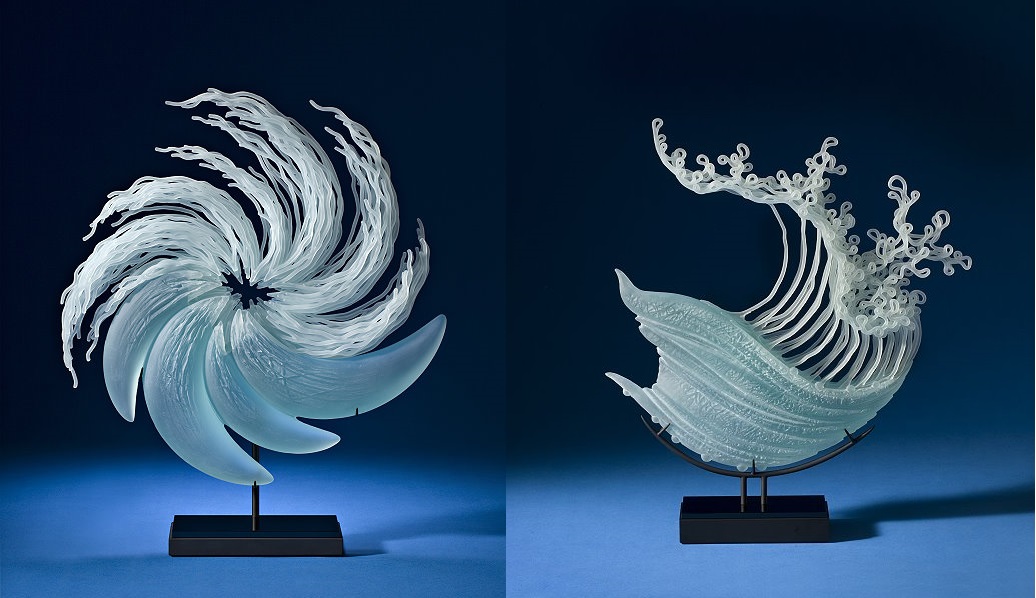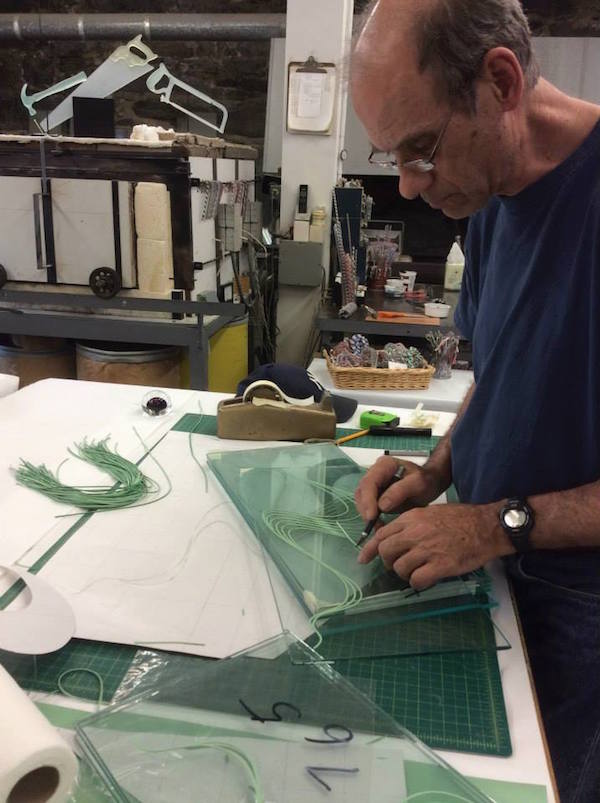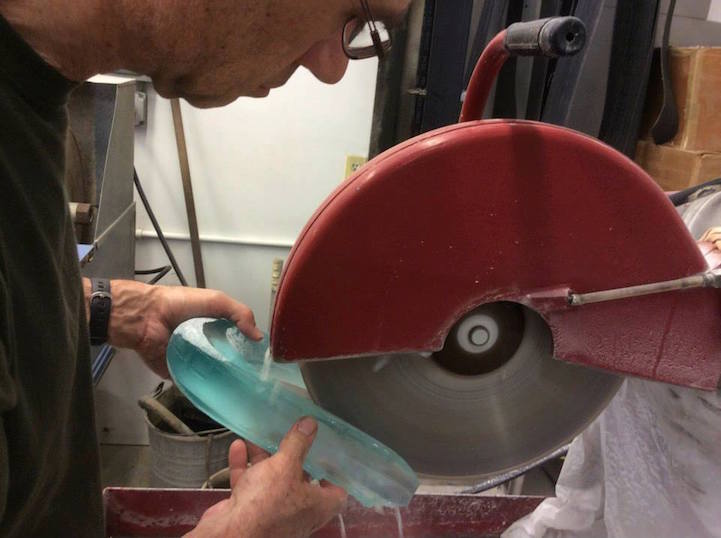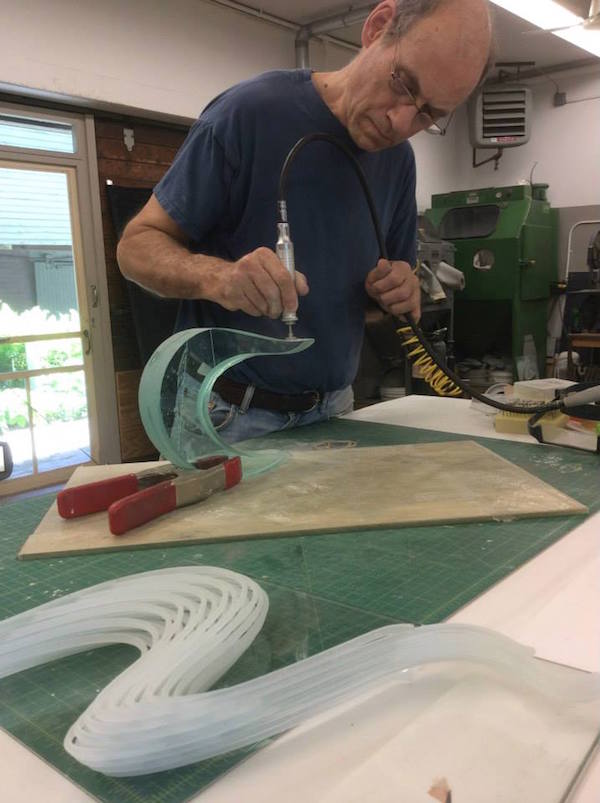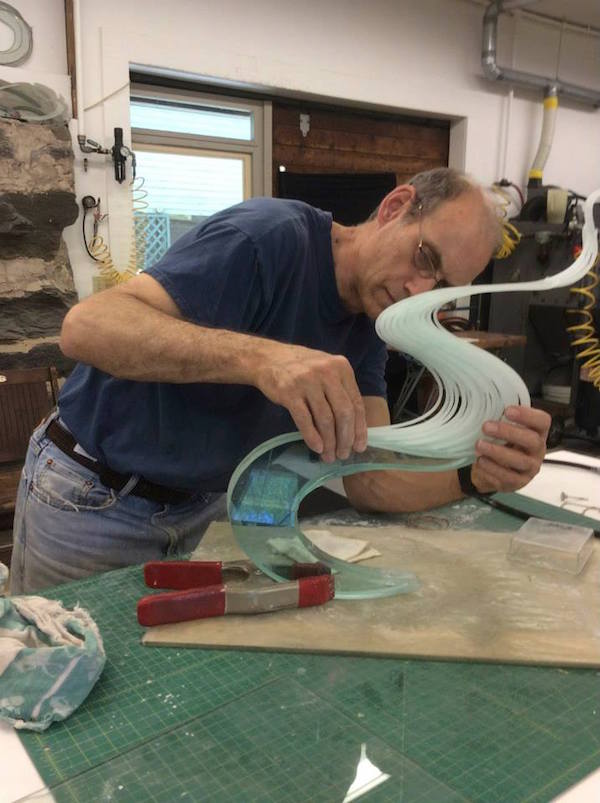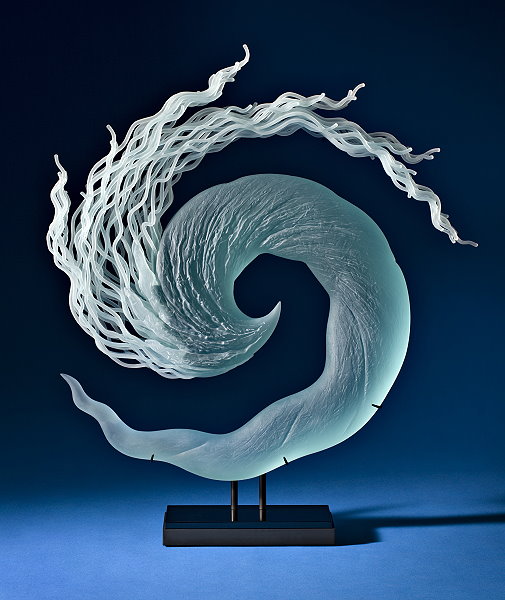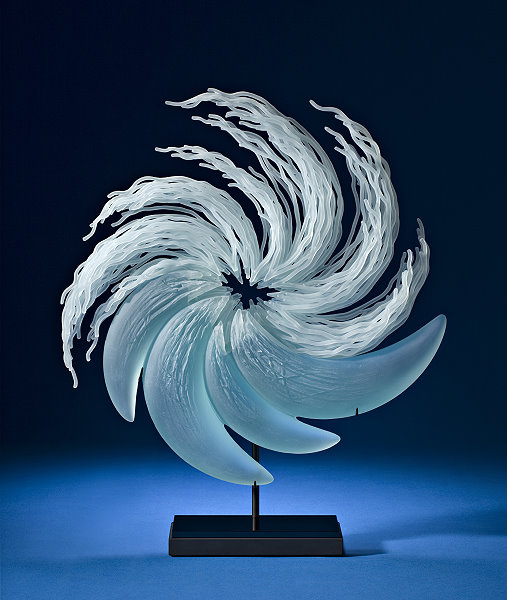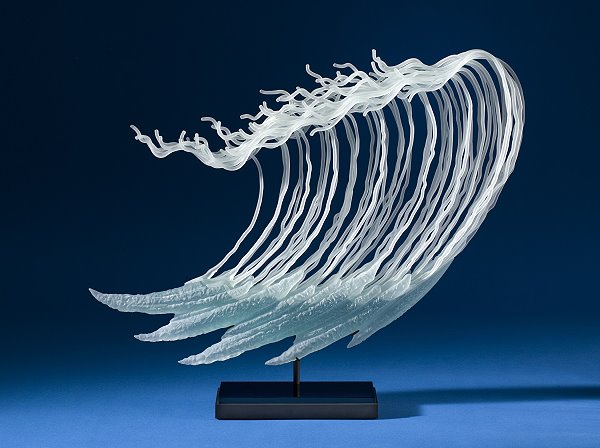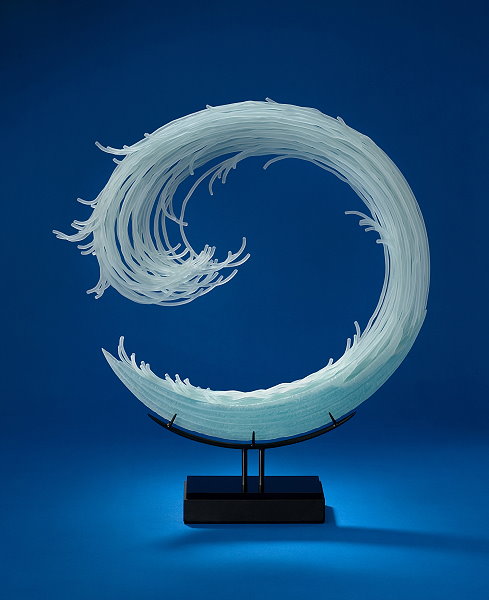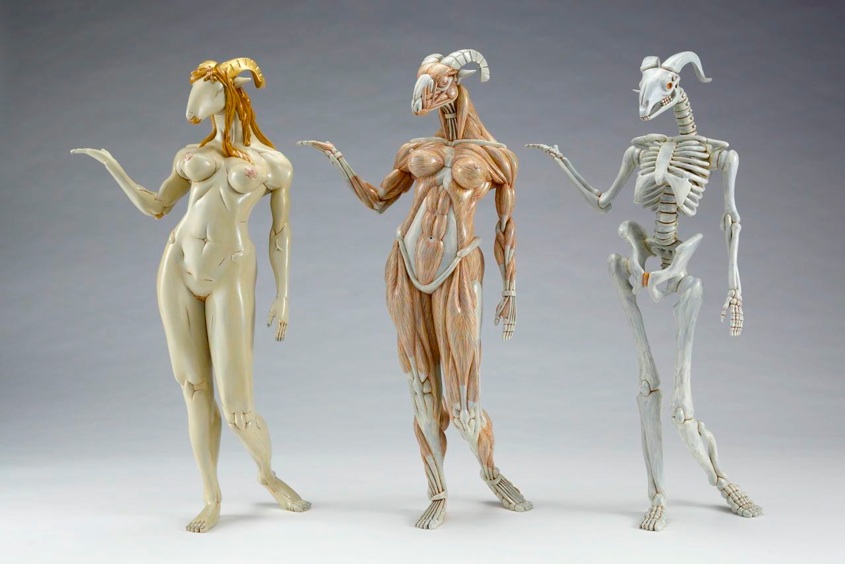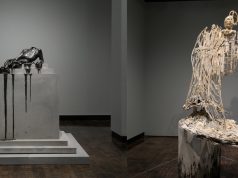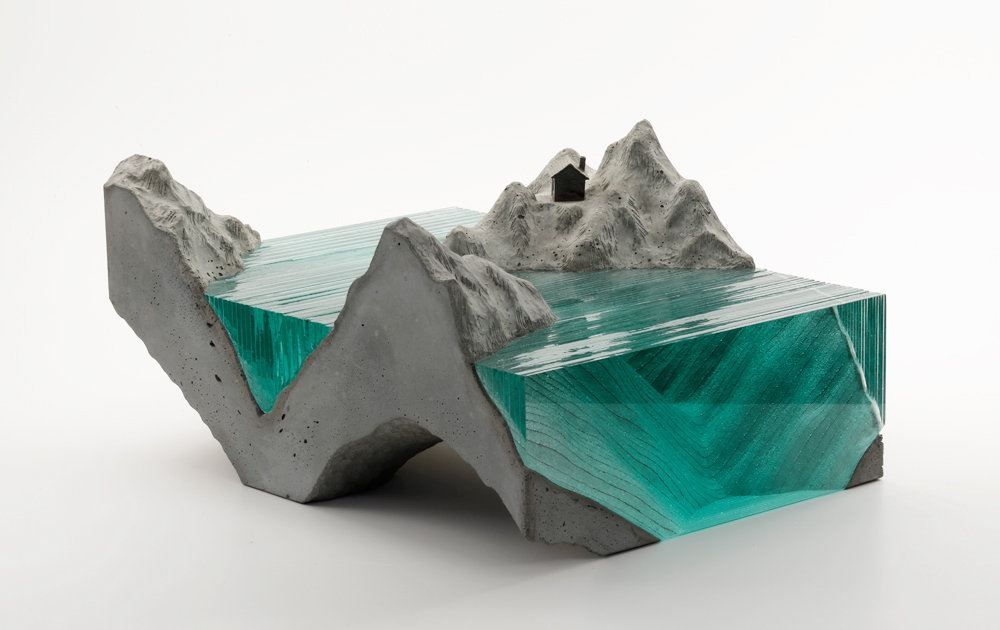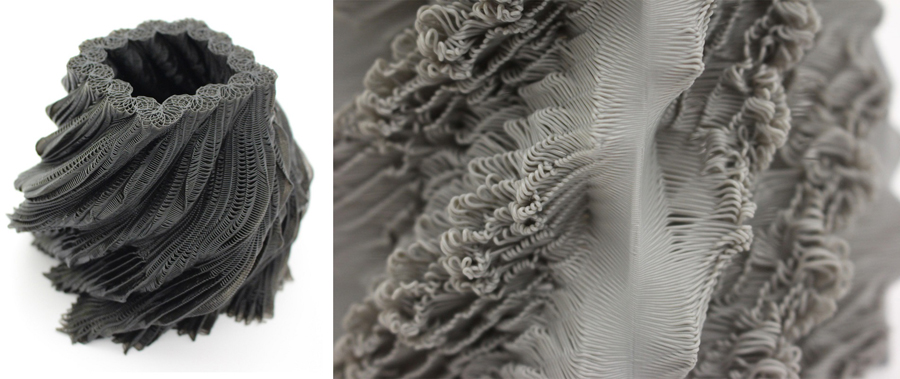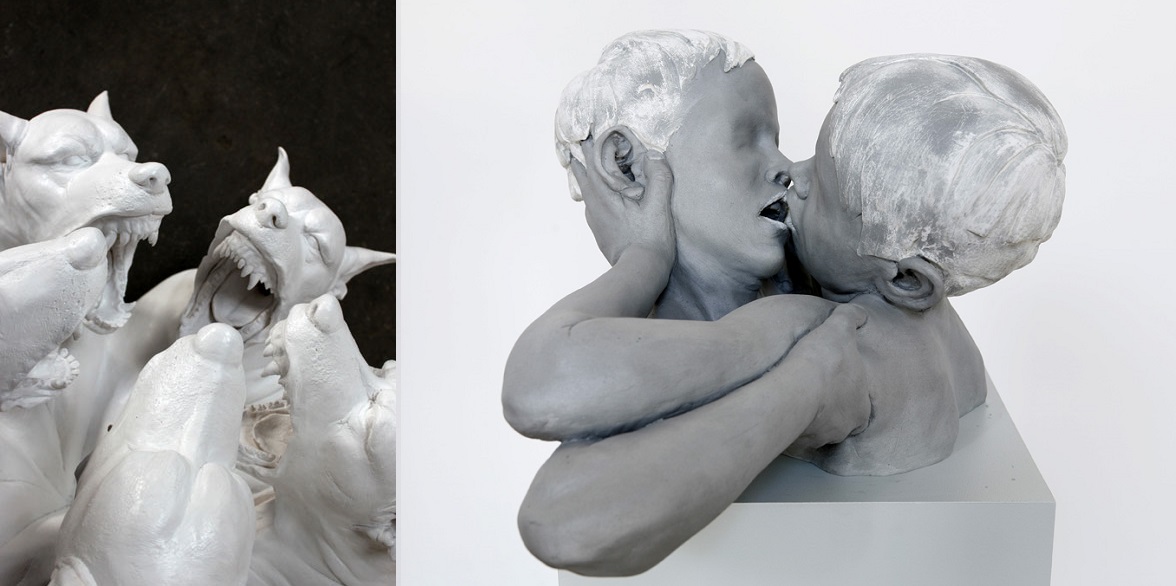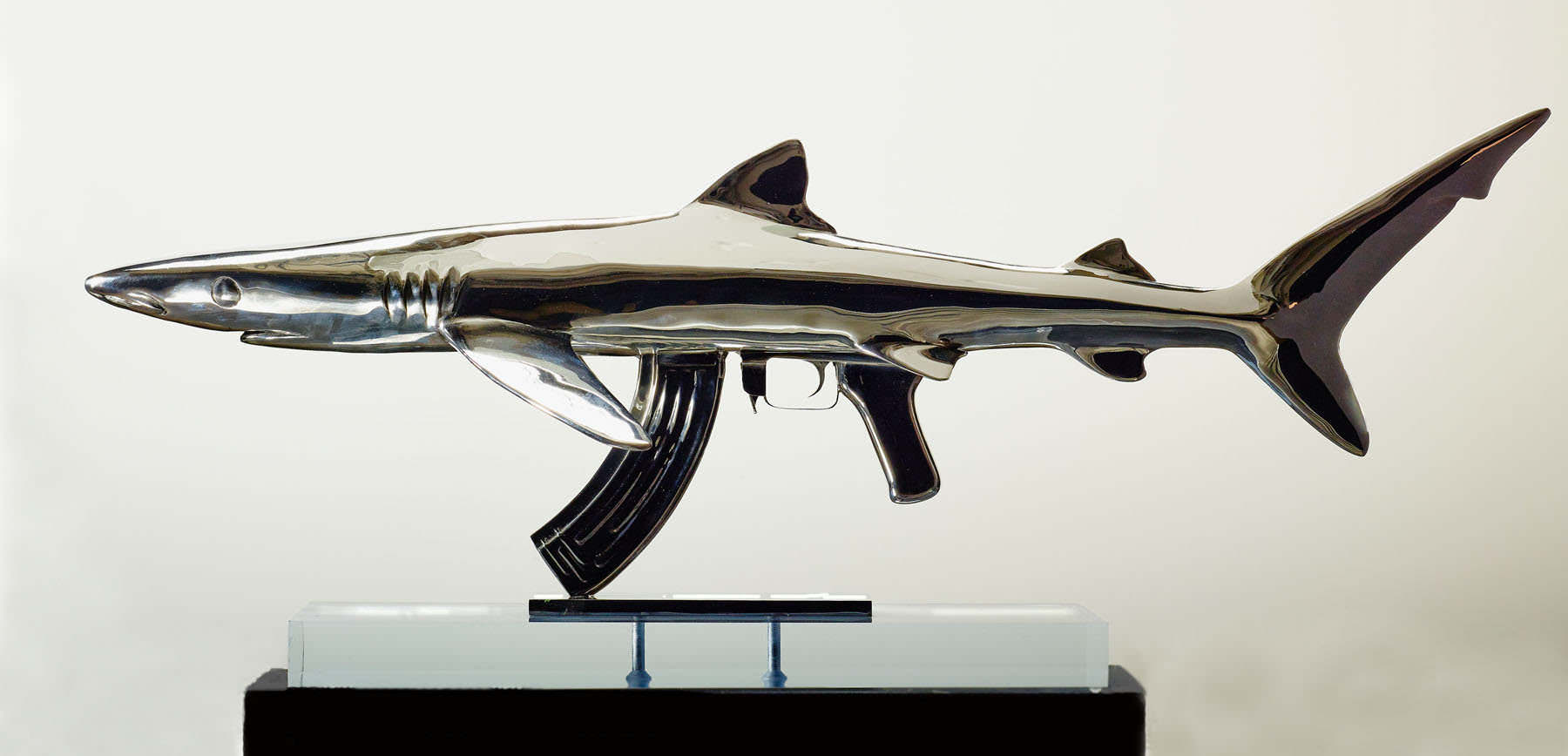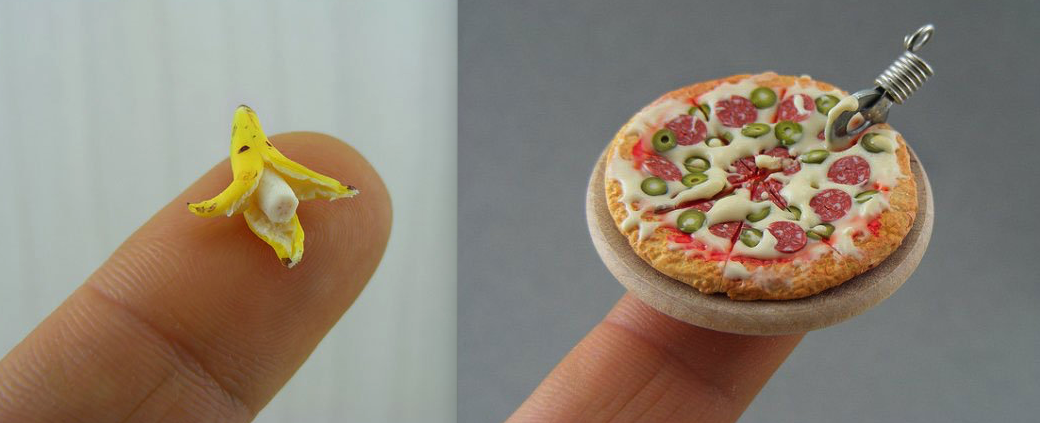These stunning, free flowing glass sculptures are the unique creations of K. William LeQuier, who has been developing his practice for more than 40 years.
It all started in the mid-70s, where LeQuier started learning how to create glass vessels using the technique of glass blowing. After almost 20 years he began experimenting with sandblasted surface designs and carving glass into a myriad of textures using a sandblaster and a diamond saw. Unexpected and exciting results during the process of his work, led LeQuier in new directions of creating. The artist realized he could make multi-layered constructions that looked like free flowing strands of carved glass, after observing stacks of salvaged glass shelving.
His working process always starts with a rough sketch of the piece. After producing a template to scale, the artist has to carefully follow some steps, “Thin strips of adhesive rubber are arranged one at a time on each plate of glass. When the plate is sandblasted, the rubber acts as a resist. The rest of the plate is cut away leaving only what was protected by the rubber. After each plate is sandblasted the plates are then glued together with a special UV curing epoxy.”
When sanding is done, details are carved with a diamond tip. Then the artist hand-makes the base and armature, on which the sculpture rests.
These sculpted works are renditions of natural works such as a wave crashing. “My work is inspired by the drama of everyday events in the natural world where weather and time are catalysts for change,” says the artist.
Melissa Faithful for Art-Sheep

